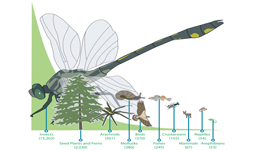Teachers' Domain - Digital Media for the Classroom and Professional Development
User: Preview


This interactive adapted from Kentucky’s Natural Heritage: An Illustrated Guide to Biodiversity introduces learners to the various species groups found in Kentucky. By clicking on each group image, learners can find out more information about four or five species in that group. Learners can also take a look at a side-by-side comparison depicting the populations of each group within Kentucky.
Kentucky, with its estimated 19,400 native species – 102 occurring only in Kentucky, ranks near the top among the other states in the diversity of several groups.
Among the highly diverse groups found in Kentucky are salamanders, aquatic organisms, and cave-dwelling species. Being located in the southeastern United States puts Kentucky in an area rich in aquatic organisms and salamander distribution. Also, because of Kentucky’s climate and large deposits of limestone, the landscape is perfect for cave formation, thus making the perfect habitat for cave-dwelling species.
Show students the first bar graph that has all of the species at an equal level. Before moving on, have each of them rank the different species groups according to what they think the distribution will be. Have them write a brief explanation as to why they think that. Show them the actual species graph and size chart. Discuss the differences, what lead them to their original answers and why the actual chart reads the way it does.
Have the students work individually or in pairs and convert the information from the size chart to percentages then, make it into a pie chart.
 Loading Standards
Loading Standards